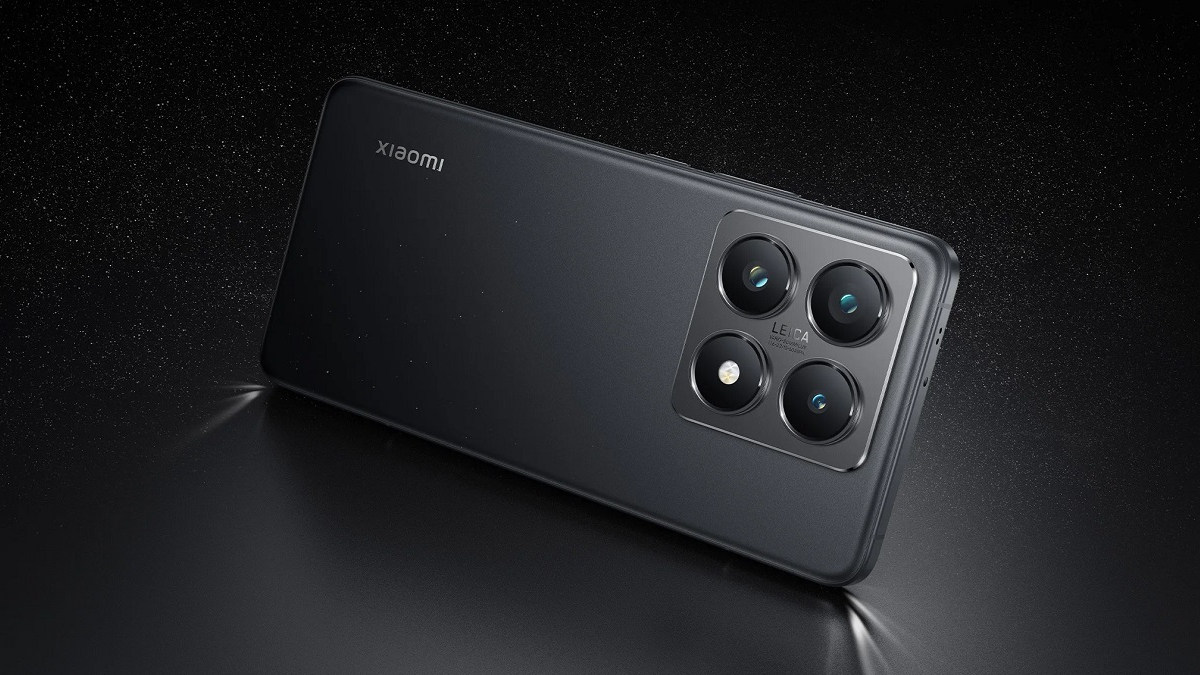
Xiaomi has introduced two of its latest and most advanced smartphones, whose powerful lenses it co-engineered with Leica Camera.
Both of the new smartphones offer the rather unique feature of sharp, powerful camera systems with Leica-branded Summilux lenses built into them.
A third phone model, the Max Flip, will also feature Leica Summilux lens technology, but we don’t yet know what markets it will be available in.
Moving back to the 14T and 14T Pro, they both come packed with photographic and photo processing technology.
The 14T Pro
Starting with the premium edition of the two, the 14T Pro, here’s a breakdown of what it offers.
This more expensive variant of the two phones includes three cameras that Xiaomi and Leica have combined together for the sake of naming them as if they were a single system called the “LEICA VARIO-SUMMILUX 1:1.6-2.2/15-60 ASPH.”
In reality, though, they are three specific cameras that each have their own uses.
The first and most important of these is the main camera, with a 23mm equivalent f1.6 front lens and a 50MP Type 1/1.31 sensor with 9.2 x 7.8 mm dimensions. This main camera includes optical image stabilization and the sensor behind has been built with what the two companies called a “4-in-1 Super Pixel” design.
Leica and Xiaomi haven’t elaborated in detail on this sensor design but it might be a Sony-made technology called Quad Bayer, which extends specific color patterns across four photodiodes in the sensor.
If so, this sensor tech should let the main camera of the 14T phones deliver better low-light performance, superior contrast and much crisper resolution.
The main camera is accompanied by a 15mm equivalent ultra-wide f2.2 camera with a 12MP resolution and another 50MP beast of a telephoto camera with a respectable 60mm-equivalent focal length and f2 aperture.
This telephoto camera’s sensor is a “Super Pixel” 4-9 x 4.2mm system but apparently doesn’t include the specific 4-in-1 Super Pixel technology of the main camera’s sensor.
According to Xiaomi and Leica, the “LEICA VARIO-SUMMILUX 1:1.6-2.2/15-60 ASPH.” triple camera system described above delivers five different focal lengths ranging between 15mm to 120mm, despite the 60mm limit of the telephoto camera.
Key features of the 14T Pro’s main camera include:
- Two Leica photographic styles (Leica Authentic Look, Leica Vibrant Look)
- Leica filters
- Leica classic shutter sound
- Leica watermark
- Master-lens system(35mm Documentary lens, 50mm Swirly bokeh lens, 75mm Portrait lens and 90mm Soft focus lens)
- Xiaomi ProFocus(Motion tracking focus, eye tracking focus and motion capture)
- Xiaomi ProCut
- Lightning Burst
- Night mode (wide/ultra-wide/telephoto)
- Portrait mode(Leica portrait style, Master portrait style)
- Digital zoom up to 30x
- HDR
- 50MP mode(wide/telephoto)
- AI camera
- Panorama
- Slow motion
- Long exposure
- Documents
- Pro mode
- Image formats captured: DNG, HEIF, JPEG
- RAW mode
The front camera system can also capture video in 8K at 24 or 30fps; in 4K at 24, 30 and 60fps; or in 1080p at 30 and 60fps.
Its slow-motion video options are available in several resolutions.
Finally, the Xiaomi 14T Pro includes an in-display selfie camera that’s nothing to frown at. It comes with a 32MP sensor, an f2.0 aperture and a 25mm equivalent focal length. It also offers an 80.8˚FOV-
Features of the selfie camera include:
- Night mode
- HDRPortrait mode
- Palm shutter
- Voice shutter
- Timed burst
- Selfie timer
- Screen flashlight
- HDR10+ video recording
It can also record video in 4K at 30fps and 1080p at 30 and 60fps.
As for the more affordable Xiaomi 14T phone, it delivers many of the same photographic features as the 14T Pro but with a few exceptions.
The 14T
In the case of the 14T, it also includes a triple-camera system with a 23mm equivalent focal length and a 50MP Super Pixel design but here the sensor is a smaller Type 1/1.56 variant with 7.7 x 6.5mm dimensions and a slower f1.7 aperture. It has optical image stabilization though.
Xiaomi also explains that the 14T’s sensor is a Sony IMX906 High dynamic range model, unlike the more sophisticated Light Fusion 900 Ultra-high dynamic range sensor found in the main camera of the 14T Pro phone.
The 14T’s triple-camera system also includes a 15mm equivalent ultra-wide f2.2 camera with 12MP resolution and a telephoto camera too, but in this case, it’s a 50mm equivalent version with an f1.9 aperture.
Again, Xiaomi and Leica claim five different focal lengths ranging from 15 to, in this case, 120mm.
In the 14T phone, Leica and Xiaomi have named the combo of three rear cameras as if they were just one single lens. As a whole, they’re called the LEICA VARIO-SUMMILUX 1:1.7-2.2/15-50 ASPH.
The display on both these new Xiaomi phones is the same and very robust with a 6.67-inch screen length, AMOLED technology and a peak brightness of 4000 nits. The displays also deliver rich color with 100% DCI-P3 color space coverage.
For rapidly using the cameras on these phones and storing all the media you capture, Xiaomi has made the 14T in two versions whose respective storage and RAM combos are either 12GB, 256GB + 8GB Ultra Space or 12GB, 512GB + 16GB Ultra Space.
As for the 14T Pro, its Storage and RAM options are more robust, consisting of 12GB, 256GB + 8GB Ultra Space, 12GB, 512GB + 16GB Ultra Space and 12GB, 1TB + 32GB Ultra Space.
Xiaomi will be retailing its two new phones at a base price of €649 for the 14T and €799 for the 14T Pro.
Credit : Source Post








